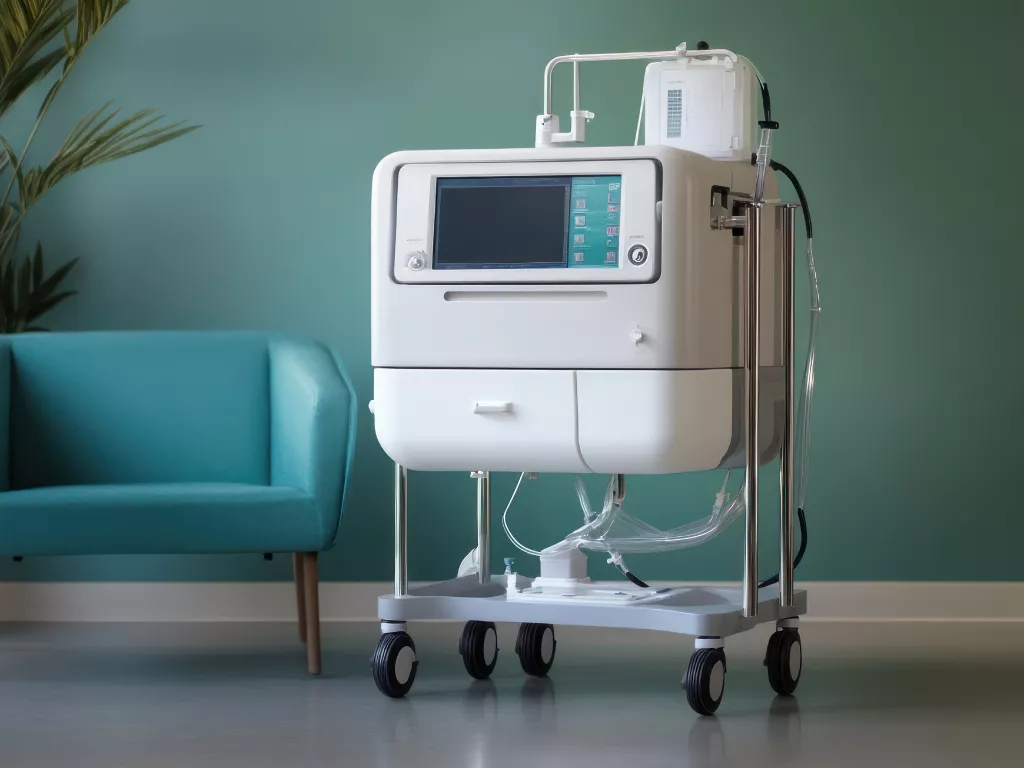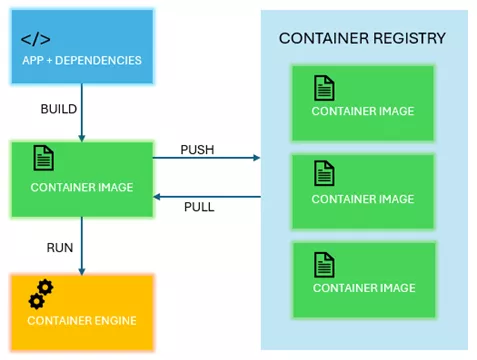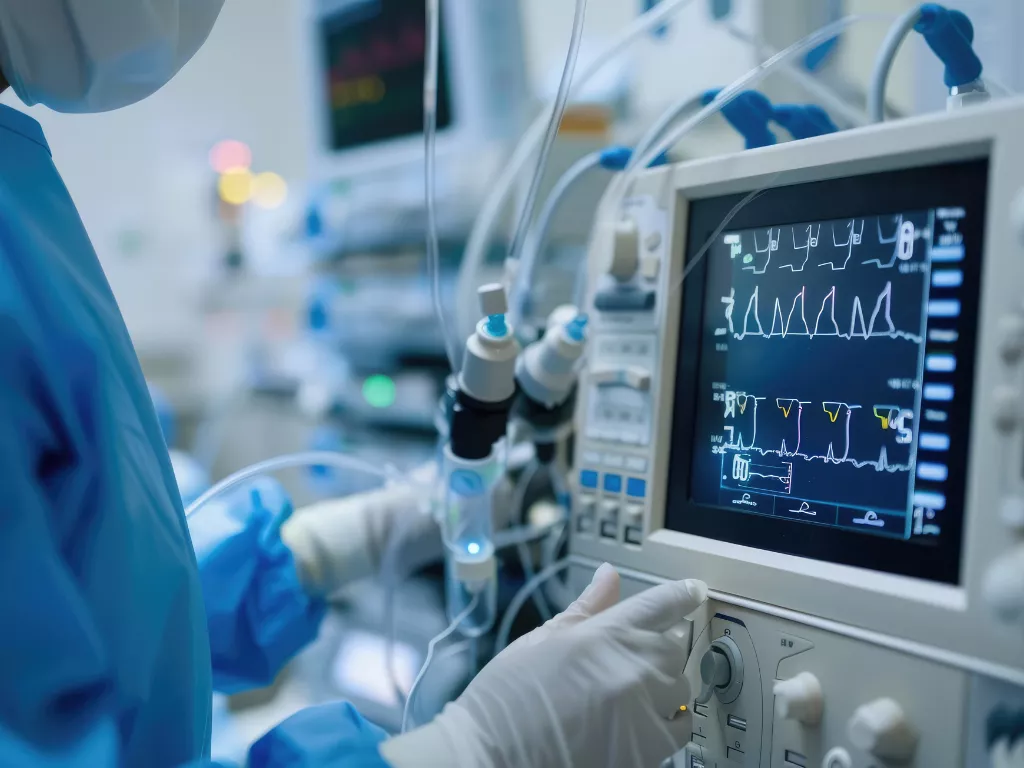Top Healthcare Technology Trends 2023 and Beyond
Today, the healthcare industry is constantly evolving and is not just limited to the treatment of patients. Patients, doctors, healthcare professionals, and the overall population are now focusing on comprehensive health and sustainable well-being. An emphasis on preventive healthcare and value-based care is growing rather than only curing illness.

Medical devices are also useful in monitoring treatments and aiding disabled populations to enhance safety. Thus, they are fundamental and integral components of healthcare systems.
The healthcare future lies in technology-driven digital transformation. A large weightage is being given to the prevention of disease, early diagnosis with sophisticated tools, and meticulous post-illness monitoring and care.
Healthcare is now serving patients to be fit physically, socially, mentally, and emotionally - a holistic approach.
Healthcare dynamics have changed during and after the pandemic. Across the globe, individuals are more conscious about holistic health. Because of the pandemic, laypersons are investing in medical technology to monitor their health and plan their life for a healthy future. The healthcare industry has much to revamp within its organizations to cater to the growing needs of people.
With the adoption of technical and structural breakthroughs, the digitalization of the healthcare industry is rapid and promising to be a boon to the entire population.
Enterprises are innovating and prioritizing their efforts and investments in:
- Artificial Intelligence
- Data Analytics
- Cyber security
- Application Modernization
- Cloud Platforms
- Hyper-automation
And as we gently enter 2023, we have come up with top trends that will shape the healthcare and life sciences landscape in the coming years.
1. Artificial Intelligence
Artificial Intelligence (AI) in Healthcare Market is predicted to grow at a CAGR of 45% during 2023-2033. (Ref: Research Nester)
AI consists of a group of technologies that help computers mimic human cognition, and these machines can learn, think, and perform actions or even take decisions.
The volume of data from various sources such as wearables, and electronic health records (EHR) is huge. Life sciences & healthcare companies leverage this data with help of AI. It can assist in developing research, planning personalized treatment for patients, and improving the efficacy of drugs; along with ensuring regulatory compliance.
Applications of AI in healthcare
2. Telemedicine & Evolution of Remote Care
Remote Healthcare revenue is estimated to reach USD 24.74 Billion in 2029. Health systems are ready to embrace remote care and telemedicine to make it a routine (Ref: Maximize Market Research).
A mobile device or a digital wearable that constantly monitors a patient's health outside a medical facility reduces the burden on hospitals and their staff, improves treatment efficiency, and helps to keep a check on day-to-day patients' medical updates for care providers.
For patients, it is beneficial as there is no need for admission to the hospital, treatment is possible in a home environment, patients can connect to the medical staff immediately for any concerns, and can access their medical data anytime and from anywhere.
Driving Factors that increase the adoption of telemedicine:
- Shortage of healthcare resources to deliver care for the increasing geriatric patient population
- Highly-priced hospital expenses
- Increase in the use of smartphones and wearables
3. Increased Investment in Cybersecurity
Healthcare Cybersecurity Market is reckoned to surpass $15.25 Bn by 2028 and is expected to witness market growth at a rate of 18.1% from 2022-2028 (Vantage Market Research).
Medical data and private patient information has been on the radar of cybercriminals. The amount of data generated through electronic medical records, apps, wearables, laboratory tests, and prescriptions is enormous and continues to grow. It is obvious that organizations need to secure this data, and it is necessary to ensure that the privacy of this data is not compromised. Organizations are therefore increasing their efforts to ensure the security of digital and health data. The demand for cybersecurity services is ever-increasing, and there will be a need for experienced, trained, and certified cybersecurity professionals and managed security services internationally.
A Gartner report suggests that organizations should improve cybersecurity risk management programs by integrating medical device security capabilities with traditional cyber protection methodologies.
4. Adoption of IoMT
The global market for the Internet of Medical Things (IoMT) is projected to grow to $187.60 billion in 2028. (Fortune business insight)
Although the IoMT is not a new trend in 2023, this sector will be expanding its horizons in the coming years. The Internet of Medical Things is an infrastructure of wirelessly connected devices, software applications, systems, and other tech solutions which collect, process, monitor, and analyze data in real time.
IoMT has the potential to transform and improve patient care, at the same time reduce costs and facilitate faster and better-informed decisions.
Benefits of IoMT
Key Driving Factors
- Increased use of wearable devices
- Growing demand for real-time health monitoring
Applications of IoMT:
5. Hyper-automation
Gartner’s survey states that in 2023, companies are going to increase funding in hyper-automation technologies to 34% compared to 2022 which was 25%.
As per healthcare reports, healthcare and life sciences, companies plan to leverage hyper-automation for quality control and achieve regulatory compliance. The COVID-19 crisis underlined the struggles of insufficient manpower and efficiency problems in the healthcare industry. The increased demands of capturing reliable data faster from various sources, processing it, and offering health outcomes can be chaotic and error-prone. To address these challenges, hyper-automation technologies facilitate the automation of manual tasks and improve healthcare operations and the patient’s experience too.
These next-generation cognitive technologies include Robotic Process Automation (RPA), Intelligent Automation (Automation with help of advanced technologies such as AI and Machine Learning, Natural Language Processing), and smart document processing. Hyper-automation speeds up the processes in the healthcare industry, reduces the resource shortage, and improves focus on providing value-based care for patients.
However, the healthcare industry is still in the nascent stages of the adoption of new-age technologies. The above mentioned, 5 major trends in digital technologies, have started revolutionizing the world of healthcare and life sciences and will completely change the industry in the coming years.
Enterprises are pushing full steam into digital investments by aligning technology priorities to business initiatives. Building teams, partnering with the right service providers, and prioritizing digital health initiatives according to business trends are of the greatest importance to get a competitive edge in today’s market.
Are you ready?
This blog is written by Divya Ghole Content Marketer, at Decos. She is content marketing strategist specialized in creating content for marketing collaterals contributing to successful marketing campaigns.
Decos is a cutting-edge technology services partner ready to meet your software needs in the medical domain. If you have a question on one of our projects or would like advice on your project or a POC, just contact Devesh Agarwal. We’d love to get in touch with you!

Discover more

Role of Human Factors Engineering in Design of Portable Medical Devices

Deploying Applications with Ease: A Guide to Containerization

